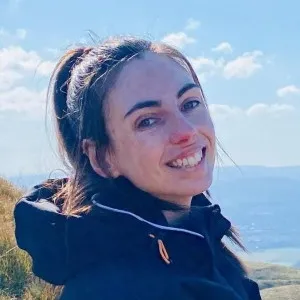Citation
Overview
This report reviews the suitability of methods used to calculate the scale of Artificial Nest Structures (ANS) provided as compensation measures for Kittiwake mortality at offshore wind farms in English waters, due to turbine collision only.
In more detail
Artificial Nest Structures (ANSs) have been approved as strategic compensation measures following derogation cases required to enable the consent of several offshore wind farms due to concerns about negative impacts on seabird features of designated Special Protection Areas (SPAs). However, there is stakeholder disagreement regarding the efficacy of such compensation measures and the methods used to calculate their required scale, i.e. the number of breeding Kittiwake pairs needed to occupy the site to produce the number of new breeding birds required to compensate the predicted mortality impact.
In this report, we reviewed the suitability of methods used to calculate the scale of ANSs provided as compensation measures for Kittiwake mortality at offshore wind farms in English waters, due to turbine collision only.
We found that methods used were inconsistent across the wind farm developments. In particular:
- Some developments followed a ‘new colony’ approach, where all breeding birds produced at the ANS counted towards the compensation target. This approach is based on the assumption that birds recruiting to the ANS would not have bred elsewhere in the metapopulation, which in turn implies the existence of a non-negligeable pool of adult non-breeders. Others followed a ‘surplus bird’ approach, where only birds in excess of either breeding birds that would have been produced elsewhere in the absence of the ANS (assuming a higher breeding productivity at the ANS), or those needed to replace mortality at the ANS, counted towards the compensation target. One development (Hornsea 3) used a hybrid of these approaches, where a ‘surplus’ was not calculated against a counterfactual, but only birds expected to disperse to other sites counted towards the compensation target, albeit under the assumption of unrealistically high dispersal rates. Another development (the Sheringham Shoal and Dudgeon Offshore Wind Farm Extension Projects) used a different approach based on the relocation of birds nesting in suboptimal sites in an existing ANS to newly constructed sites in the same ANS of higher breeding productivity.
- Values of demographic parameters used in the compensation calculations differed across the developments.
- Only three developments modelled estimated timescales for achieving the compensation targets. Estimated timescales are highly sensitive to assumptions around the colonisation rate, breeding productivity and initial size of the ANS population. Empirical data to assess these assumptions are generally lacking.
ANSs further need to: i) compensate for turbine collision mortality of birds at the ANS, ii) replace birds lost at the ANS due to natural mortality, and iii) account for the fact that only a portion of birds produced will disperse to the existing wider metapopulation. Although the methods employed by the reviewed wind farm developments accounted for some of these elements, none accounted for all three.
Existing data regarding Kittiwake metapopulation dynamics and variability in demographic rates are limited. However, the calculated scale of compensation is highly sensitive to the choice of demographic rates regardless of the methodology. The lack of empirical data on ANS performance thus leads to large uncertainty over the optimality of methods used for calculating compensation requirements, and ultimately leads to uncertainty about the efficacy of ANSs as a compensation measure overall.
There is also limited information regarding additional factors potentially impacting Kittiwake metapopulation dynamics, such as spatial and temporal trends in demographic parameters, colonisation and population growth rates, metapopulation dynamics, and density dependence. Consequently, these factors were not able to be considered (or fully considered) by the offshore wind developers during the calculation of compensation scale. However, these factors are the subject of ongoing research that could facilitate inclusion of additional information into future calculations of compensation scale.
The combined total number of nest spaces provided by existing and proposed ANSs is significant in the context of the most recent population estimates. Provision of ANSs at this scale may have measurable impacts on regional metapopulation dynamics and this needs to be accounted for in the monitoring of both ANSs and naturally nesting populations.
The extent of monitoring undertaken at operational ANSs will largely determine the form and feasibility of future modelling attempts aiming to evaluate their efficacy as a compensation measure and the overall impact on the existing Kittiwake metapopulation.
We briefly review additional compensation approaches for species other than Kittiwake and the considerations that should be applied to calculating the compensation scale for them. Compensation scale calculations can in principle be applied in a similar manner using population modelling, however, quantitative information about how both adverse impacts and compensation measures modify demographic rates is often lacking.
Based on the reviewed evidence, we make the following recommendations:
- Compensation calculations should follow an approach that reflects population age structure and dispersal behaviours of Kittiwake (conceptually similar to the Hornsea 3 approach), while constraining assumed dispersal rates such that the artificial nest structure is self-sustaining under biologically reasonable demographic rates, noting that the evidence base for the latter is limited.
- Compensation calculations should be made fully transparent and reproducible, and conducted in a way that is insensitive to software choice.
- Monitoring of ANSs is central to our recommended approach with an initial priority to ascertain rates and extent of ANS colonisation and to ensure breeding productivity is sufficient to maintain the ANS population. Such monitoring data should greatly facilitate future modelling efforts aiming to evaluate their efficacy. This should ideally also include baseline monitoring both prior to and during operation and regular resighting efforts of ringed birds at the ANS and colonies within likely range of dispersing recruits from the ANS. Adaptive management strategies should be applied if the observed demographic rates are evidenced to significantly diverge from those assumed in the compensation calculations.
- Given the scale of proposed ANSs, monitoring data must feed into the Seabird Monitoring Programme to facilitate meaningful inferences of the status of Kittiwake populations in the region.
- Current evidence to support the efficacy of ANSs as compensation for Kittiwake mortality at offshore wind farms is limited, but monitoring of future planned ANS is required to quantify their impact.
This project is part of the Natural England / BTO Research Partnership providing the evidence needed to support nature’s recovery and people’s experience of the natural world. This report was supported with funds from Defra and the Collaboration on Offshore Wind Strategic Compensation.



